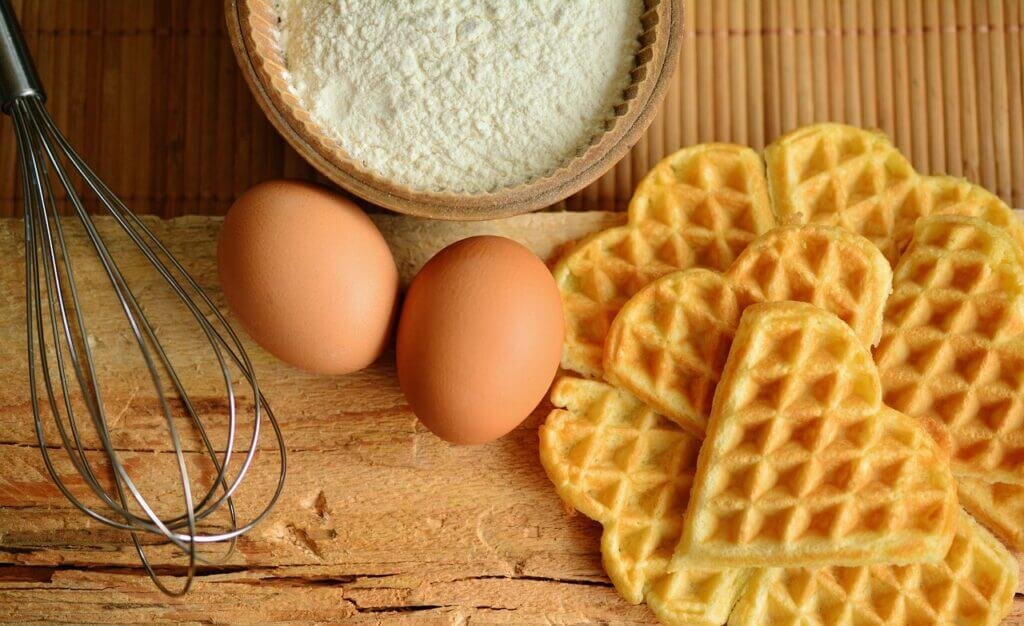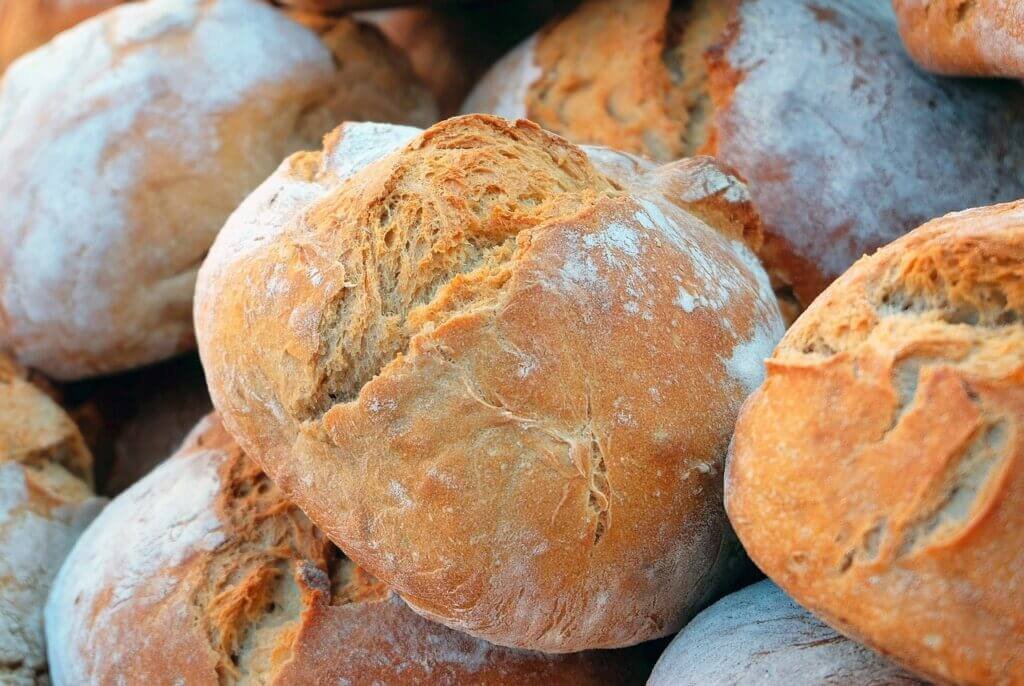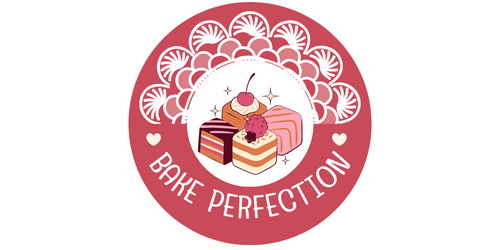Have you ever wanted to take your baking skills to the next level? If you’re ready to venture into the world of advanced baking, this article is for you. Discover a variety of techniques and recipes that will challenge and inspire you. From intricate cake decorating techniques to complex pastry recipes, there’s something here to satisfy every ambitious baker. Whether you’re looking to impress your friends and family or simply want to challenge yourself, these advanced baking techniques and recipes are sure to elevate your skills and creativity in the kitchen. So roll up your sleeves, grab your apron, and get ready to embark on a delicious baking journey.

Advanced Baking Techniques
Laminating Dough
If you’re ready to take your baking skills to the next level, it’s time to explore the art of laminating dough. This technique is commonly used in pastries like croissants and Danish pastries, where multiple layers of butter are folded into the dough to create a flaky and tender texture. Laminating dough can be a time-consuming process, but the end result is definitely worth the effort. It involves rolling out the dough, placing a layer of butter on top, folding it over, and repeating this process several times. The repeated folding and rolling create alternating layers of dough and butter, which puff up when baked, giving you that deliciously delicate and buttery goodness.
Kneading and Shaping Artisan Breads
Artisan breads are known for their crusty exterior and soft, chewy interior. Achieving the perfect texture and flavor requires mastering the technique of kneading and shaping the dough. Kneading is the process of working the dough to develop the gluten, which gives bread its structure and elasticity. Proper kneading involves push and fold motions, stretching the dough away from you, and then bringing it back towards you. This motion helps distribute the yeast evenly and develop the gluten.
Shaping artisan breads is also an important step in the baking process. It involves carefully manipulating the dough into specific shapes, such as boules, batards, and baguettes. This not only enhances the appearance of the bread but also affects its texture and crumb structure. With practice and an understanding of the dough’s characteristics, you can achieve beautifully shaped loaves that are as visually appealing as they are delicious.
Whipping Egg Whites to Stiff Peaks
Egg whites are versatile ingredients that can add lightness and structure to various baked goods. Whipping egg whites to stiff peaks is a technique used to incorporate air into the mixture, creating a fluffy and airy texture. To achieve stiff peaks, start with cold egg whites in a clean and dry bowl. Using an electric mixer or a whisk, beat the egg whites on medium speed until they become foamy. Gradually increase the speed and continue beating until the egg whites form soft peaks. Finally, add sugar gradually and continue beating until stiff peaks form. The test for stiff peaks is when the mixture holds its shape when the beaters are lifted. This skill is essential for making delicate desserts like soufflés and meringues.
Tempering Chocolate
Tempering chocolate is the process of melting and cooling chocolate to specific temperatures in order to stabilize the cocoa butter crystals. This technique ensures that the chocolate has a glossy appearance, a smooth texture, and a crisp snap when it sets. Tempering chocolate is essential in making various confections, such as truffles, chocolate-covered fruits, and decorations. The process involves melting chocolate to a specific temperature, cooling it down, and then gently reheating it to a specific temperature range to create the desired temper. While it may seem intimidating at first, with practice and proper temperature control, anyone can master the art of tempering chocolate and elevate their chocolate creations to a whole new level.
Sous Vide Baking
Sous vide is a cooking method that involves vacuum-sealing food in a plastic bag and cooking it in a temperature-controlled water bath. While traditionally used for savory cooking, sous vide has found its way into the world of baking as well. Sous vide baking allows for precise temperature control and consistent results, making it perfect for delicate desserts like cheesecakes, custards, and cheesecake brownies. By using a water bath to maintain the desired temperature, you can achieve a creamy and evenly cooked texture without the risk of overbaking. Sous vide baking may require some specialized equipment, but the results are well worth it for those looking to experiment with new and exciting dessert recipes.
Blind Baking
Blind baking is a technique used to partially or fully pre-bake a pie or tart shell before adding the filling. This is done to ensure that the crust is fully cooked and remains crisp, even with moist fillings. Blind baking is particularly important for custard-based pies or fillings that don’t require additional baking time. To blind bake a crust, start by chilling the dough, placing a layer of parchment paper or aluminum foil over the crust, and then filling it with pie weights or dried beans. This prevents the crust from puffing up or shrinking during baking. After the initial baking time, remove the weights and parchment paper and continue baking until the crust is golden brown. Blind baking is a valuable skill to have, as it allows you to create perfectly cooked and beautifully presented pies and tarts.
Working with Pâte à Choux
Pâte à Choux, also known as choux pastry, is a versatile dough that is used to create various French pastries, including cream puffs, éclairs, and profiteroles. This dough is unique in that it is cooked on the stovetop before being baked, resulting in a light and airy texture with a hollow interior. Mastering the art of working with Pâte à Choux involves properly combining the ingredients and cooking the dough until it forms a smooth ball and pulls away from the sides of the pan. It is then transferred to a piping bag and piped into the desired shapes before baking. The key to successful Pâte à Choux is being mindful of the dough’s consistency and maintaining the right moisture content to achieve the desired shape and texture.
Making Meringue
Meringue is a delicate and airy mixture of egg whites and sugar that can be used to create a variety of desserts, including pavlovas, macarons, and soufflés. Making meringue involves whipping egg whites to a specific consistency and gradually adding sugar to create a stable and fluffy mixture. To achieve the perfect meringue, start with room temperature egg whites and ensure that your equipment is clean and free of any grease or moisture. Begin by beating the egg whites until they become foamy, then gradually add the sugar while continuing to beat until stiff peaks form. The final result should be glossy and smooth, with the meringue holding its shape. Mastering the technique of making meringue will open up a world of possibilities when it comes to creating light and airy desserts.
Creating Mirror Glaze
Mirror glaze is a stunning technique that creates a glossy and reflective finish on cakes and pastries. This glaze is made by combining sugar, water, and gelatin, and then adding food coloring and flavoring to achieve the desired appearance and taste. The technique involves carefully pouring the glaze over a chilled cake or pastry, allowing it to spread and coat the surface evenly. The mirror glaze sets quickly and creates a mirror-like finish that is visually striking and adds a touch of elegance to any dessert. While it may take some practice to perfect the art of creating mirror glaze, the end result is definitely worth the effort.
Fermenting Dough
Fermenting dough is a technique used to develop flavor and texture in bread and other baked goods. It involves allowing the dough to rise over an extended period of time, allowing the yeast to consume the sugars and produce carbon dioxide, which creates air pockets in the dough. This process not only adds complexity to the flavor but also improves the texture and crumb structure of the final product. Fermenting dough requires patience and careful monitoring of temperature and time, as different types of bread require different fermentation methods. Whether you’re making a sourdough bread or a rustic country loaf, mastering the art of fermenting dough will elevate your baking skills to a whole new level.

Advanced Baking Recipes
Croissants
Croissants are a quintessential French pastry known for their buttery and flaky layers. The process of making croissants involves laminating the dough, which creates the characteristic layers that puff up when baked. Making croissants from scratch may seem daunting at first, but with practice and attention to detail, you can achieve bakery-quality croissants in your own kitchen. The key is to use high-quality butter, roll the dough evenly, and properly shape and proof the croissants before baking. The end result will be golden and crisp croissants with a tender and buttery interior that melt in your mouth.
Sourdough Bread
Sourdough bread is a type of bread that is made using naturally occurring wild yeast and bacteria. The fermentation process gives the bread a distinct tangy flavor and a chewy texture. Making sourdough bread from scratch requires creating and maintaining a sourdough starter, a mixture of flour and water that captures and cultivates the wild yeast and bacteria. Once the starter is ready, it is incorporated into a dough along with flour, water, and salt. The dough is then kneaded and fermented before being shaped and baked. While making sourdough bread requires patience and a bit of time, the end result is a flavorful and crusty loaf that is perfect for sandwiches, toast, or simply enjoyed on its own.
Macarons
Macarons are delicate and colorful French cookies that consist of two almond meringue shells sandwiched together with a creamy filling. These cookies are notoriously finicky and require precision and attention to detail to achieve the perfect texture and appearance. Making macarons involves carefully weighing and combining the ingredients, whipping the meringue to the right consistency, and piping the shells onto a baking sheet. The shells are then baked until they develop a smooth and shiny surface, with a crisp exterior and a soft and chewy interior. With a wide variety of flavors and fillings to choose from, macarons are a delightful treat that will impress your friends and family.
Creme Brulee
Creme Brulee is a classic dessert that consists of a rich and creamy custard topped with a layer of caramelized sugar. Making this decadent dessert requires precision and attention to detail to achieve the perfect creamy texture and caramelized sugar topping. The custard is made by combining egg yolks, sugar, and vanilla, and then slowly whisking in hot cream and milk. The mixture is then poured into individual ramekins and baked in a water bath until the custard is set. Just before serving, the custard is topped with a layer of sugar, which is then caramelized with a blowtorch or broiler. The result is a silky smooth custard with a crisp and crackling sugar topping that is sure to impress.
Opera Cake
Opera cake is an elegant and sophisticated French dessert that consists of layers of almond sponge cake soaked in coffee syrup, layered with coffee flavored buttercream, and covered in a glossy chocolate ganache. Making opera cake requires attention to detail and precision to achieve the perfect layers and flavors. The almond sponge cake is made by combining almond flour, sugar, and egg whites, which are then baked until golden and fluffy. The cake layers are soaked in a coffee syrup to add moisture and flavor. The coffee buttercream is made by combining sugar syrup, egg yolks, butter, and coffee extract, creating a rich and creamy filling. Finally, the cake is covered in a smooth and shiny chocolate ganache, which adds a decadent finishing touch.
Tiramisu
Tiramisu is a classic Italian dessert consisting of layers of ladyfingers soaked in espresso and rum, layered with a creamy mixture of mascarpone cheese and whipped cream, then dusted with cocoa powder. Making tiramisu requires the right balance of flavors and textures to achieve the perfect creamy and luscious dessert. The ladyfingers are dipped in a mixture of espresso and rum to add moisture and a hint of bitterness. The mascarpone cream is made by combining mascarpone cheese, sugar, and whipped cream, creating a light and fluffy filling. The layers are then assembled, refrigerated, and allowed to set before being dusted with cocoa powder. The result is a heavenly dessert that combines the richness of coffee, the creaminess of mascarpone, and the sweetness of the ladyfingers.
Baked Alaska
Baked Alaska is a show-stopping dessert that combines layers of ice cream or sorbet, cake, and meringue, all baked together to create a frozen dessert with a warm and caramelized meringue topping. Making Baked Alaska requires careful layering and baking techniques to achieve the perfect balance of flavors and textures. The ice cream or sorbet is shaped into a dome and placed on a layer of cake, then covered with a generous layer of meringue. The dessert is then baked at a high temperature for a short amount of time, just enough to brown the meringue while keeping the ice cream or sorbet frozen. The result is a visually stunning dessert that combines the contrasting flavors and temperatures for a truly memorable dining experience.
Gâteau St-Honoré
Gâteau St-Honoré is a classic French dessert named after the patron saint of bakers and pastry chefs. This sophisticated cake consists of a base of puff pastry, topped with a ring of pâte à choux filled with creamy vanilla custard, and adorned with caramelized sugar-coated cream puffs. Making Gâteau St-Honoré requires skill in working with both puff pastry and pâte à choux, as well as patience in assembling the various components. The puff pastry is baked until golden and crisp, providing a sturdy base for the delicate cream puffs. The pâte à choux ring is filled with vanilla custard, which adds a smooth and creamy layer to the cake. The cream puffs are then dipped in caramelized sugar, creating a crunchy and sweet topping. Gâteau St-Honoré is a true masterpiece that showcases the artistry of French pastry.
Dobos Torte
Dobos Torte is a classic Hungarian cake named after its creator, József Dobos. This exquisite dessert consists of multiple layers of sponge cake filled with chocolate buttercream and topped with a caramel glaze. Making Dobos Torte is a true test of baking and assembly skills, as it requires baking thin layers of sponge cake to achieve the perfect texture and stacking them with precision. The chocolate buttercream is made by combining butter, sugar, and melted chocolate, creating a rich and velvety filling that pairs perfectly with the light and airy sponge cake. The cake layers are then coated with a caramel glaze, which adds a beautiful shine and a contrasting caramel flavor. Dobos Torte is a dessert that is as delicious as it is visually stunning.
Babka
Babka is a sweet and yeasted bread that originated in Eastern Europe. This delightful dessert consists of a rich and buttery dough swirled with layers of chocolate or cinnamon filling. Making Babka requires patience and attention to detail, as the dough needs to be properly risen and the filling evenly spread to achieve the perfect balance of flavors and textures. The dough is made by combining flour, sugar, eggs, butter, and yeast, creating a soft and supple base for the filling. The filling is made by melting chocolate or combining cinnamon and sugar, which is then spread on the rolled-out dough. The dough is then rolled up, twisted, and baked until golden and fragrant. Babka is a delightful treat that combines the flavors of bread and indulgent fillings for a truly memorable dessert experience.
With these advanced baking techniques and recipes, you can embark on a culinary journey that will elevate your skills and impress your friends and family. Whether you choose to master the art of laminating dough for flaky croissants or dive into the world of macarons with their delicate almond shells, each recipe and technique offers an opportunity to expand your baking repertoire and create delicious masterpieces. So roll up your sleeves, preheat the oven, and get ready to take your baking skills to new heights. Happy baking!



